Have you ever driven along the back roads of Pennsylvania and come across one of the state’s beautiful metal truss bridges? Or seen a massive truss bridge spanning a major river crossing? These awe-inspiring bridges are a part of Pennsylvania’s landscape and an important part of the state’s engineering and technological history.
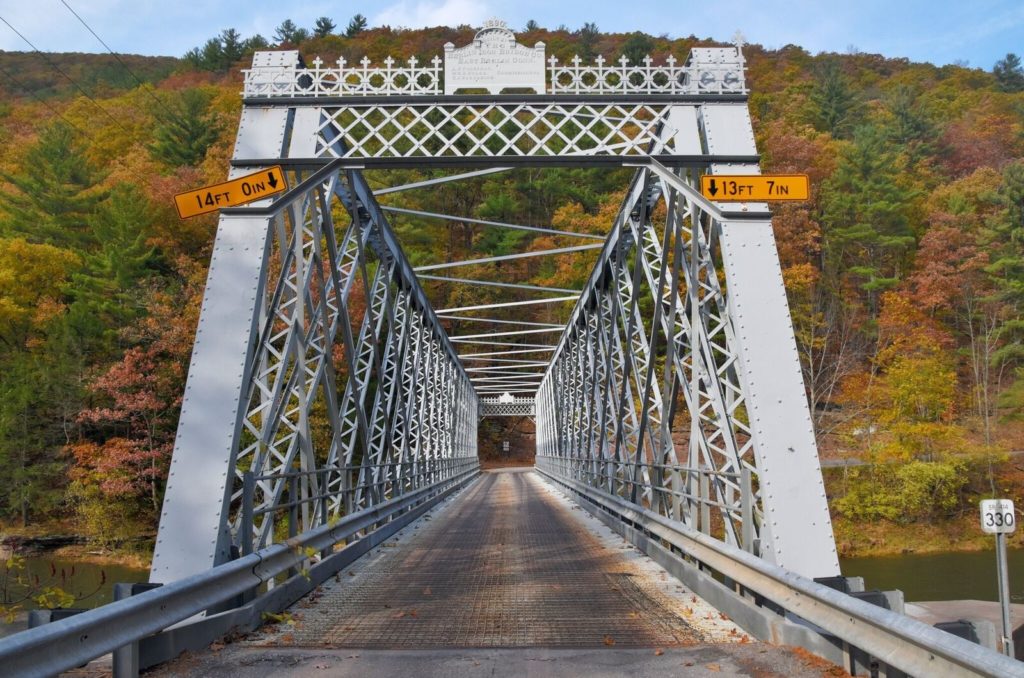
The Upper Slate Run Bridge carries PA 414 over Pine Creek in Lycoming County is in the only example of a Quadruple intersection Warren thru truss in the state. Courtesy of historicbridges.org. 2016. Used by permission of Nathaniel Holth.
Metal truss bridges come in many shapes, sizes and conditions, from sleek and curvy, like the rare Smithfield lenticular truss bridge in Pittsburgh, to rusty and boxy, like the closed Witherspoon Road Bridge over Raccoon Creek in Washington County. These bridges, seen in the images below, all stand as icons of civil engineering art.
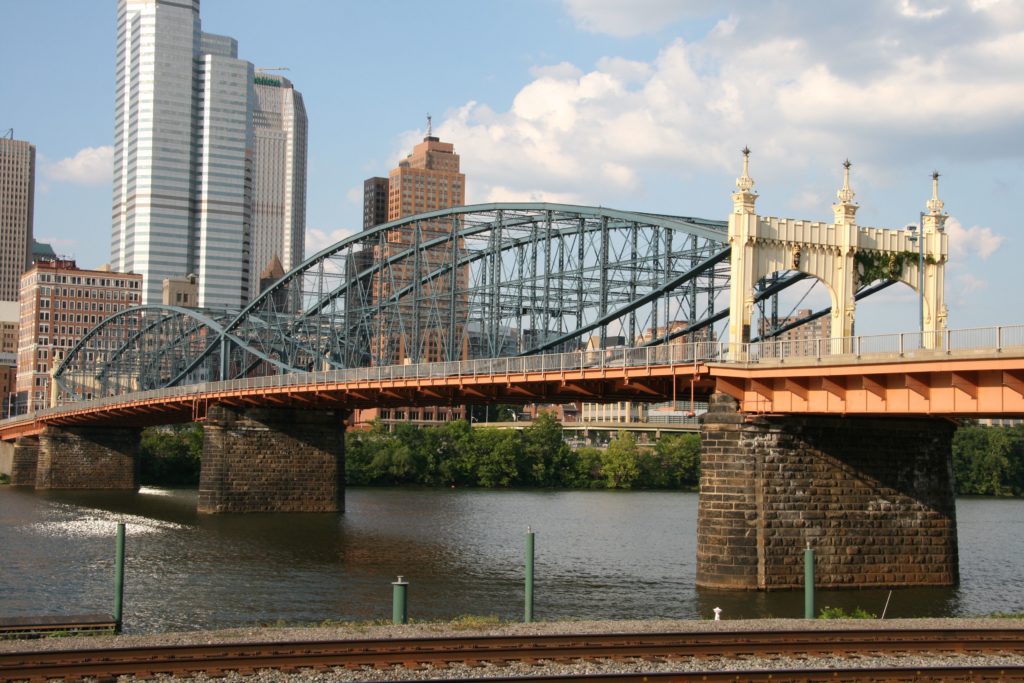
The iconic Smithfield Bridge is a rare lenticular truss located in Pittsburgh. Courtesy of historicbridges.org. 2004. Used by permission of Nathaniel Holth.
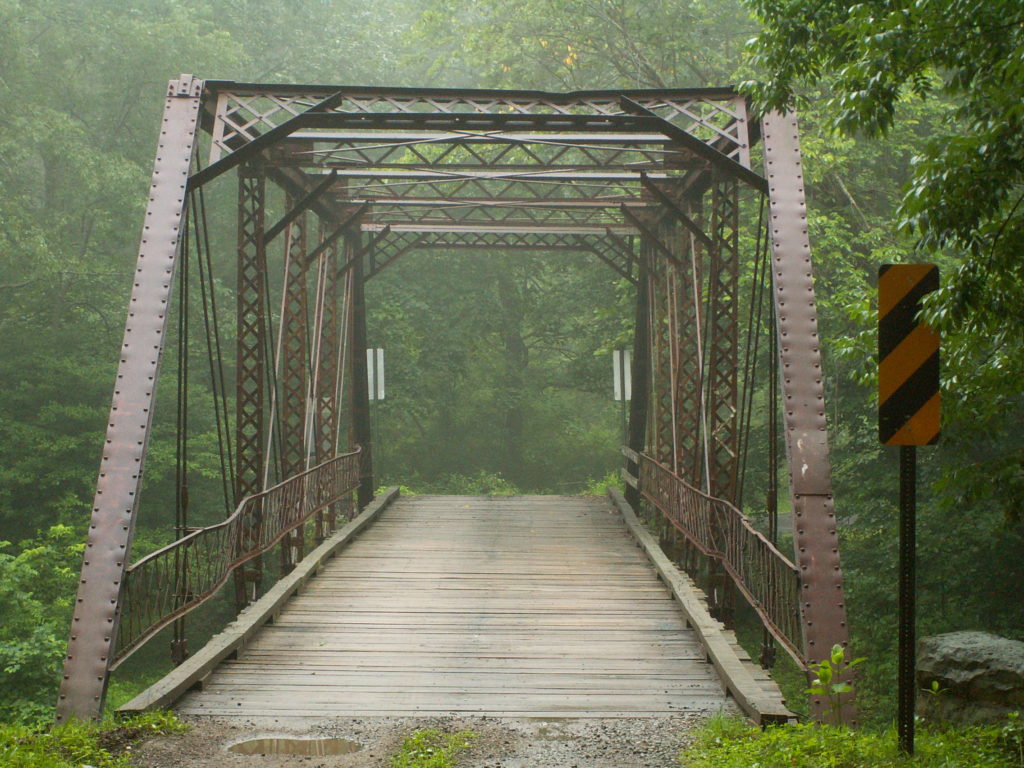
The Witherspoon Bridge, a Pratt thru truss, is now closed to traffic. Courtesy of historicbridges.org. 2006. Used by permission of Nathaniel Holth.
Few man-made structures combine the technical with the aesthetics in such an evocative way as metal truss bridges.
A truss bridge is constructed by joining smaller connecting elements to form triangular units. These units form a rigid structure that transfers the load from a single point to wider area, creating appealing bridges with attention grabbing designs. The first truss bridges were made of wood and many people are familiar with the iconic covered bridge. However, unlike covered bridges where the structure is hidden by cladding, metal truss bridges readily reveal their structural design. These bridges also represent an important part of American engineering and architectural history.
If you are captivated by a good story, then metal truss bridges have a lot to offer. An explosion of technology and design in the mid-19th century led to the popularity of metal truss bridges that lasted into the 20th century. The mid-19th century expansion of railroads and increase in size of locomotives and rolling stock created a need for bridges that were stronger and more reliable than those built for roadway use. Bridge engineers embarked on a period of technological experimentation that resulted in a variety of truss designs that were eventually adopted to roadway use. The variety of trusses we see today are the namesakes of engineers and craftsmen, such as William Howe, Thomas Pratt, and Squire Whipple, who experimented with finding the best truss type and design to span a crossing safely, efficiently, and economically. This informative poster by the Historic American Engineering Record (HAER) shows the extensive variety of trusses that can be found.
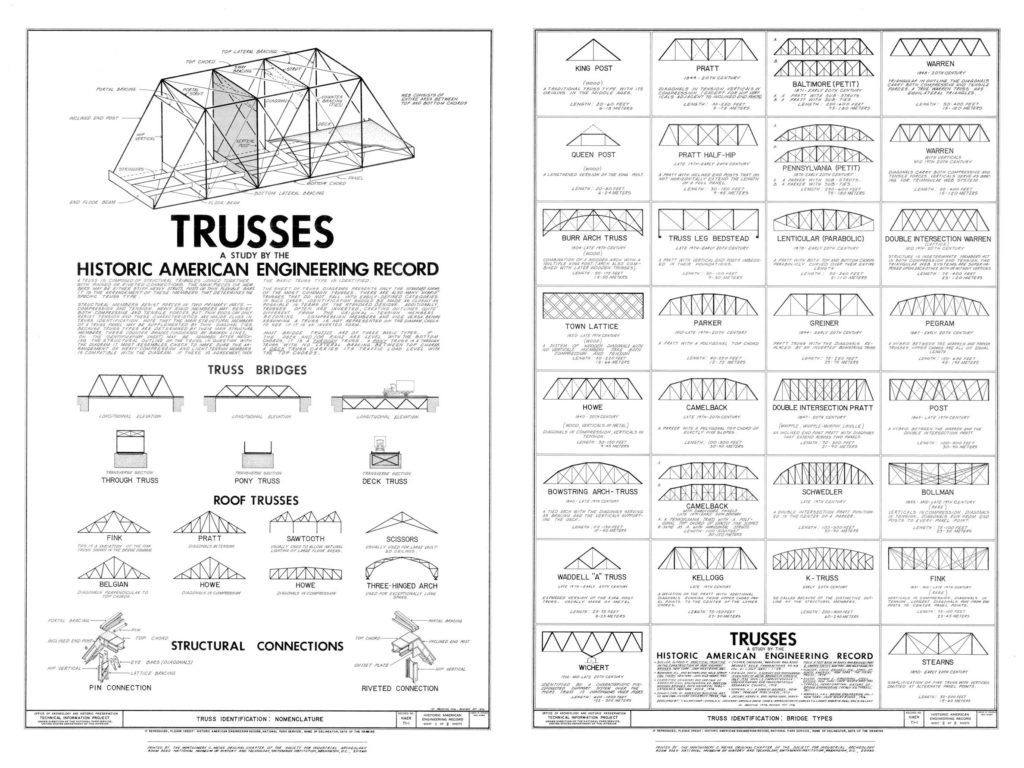
A study of Trusses by HAER. Courtesy of the Library of Congress.
With the heart of the nation’s iron and steel industry located in Pennsylvania, it is no wonder that many bridge manufacturing companies were located in the state.
Bridge fabricators bought iron and steel from foundries and metal manufacturers and formed, drilled, and assembled bridges in their shops. Bridges were then shipped to the bridge site, where they were erected in the field using unskilled labor. Bridge companies employed salesman to travel the countryside to peddle their company’s bridges to local township supervisors and county commissioners. Sales agents carried catalogs that illustrated the types of bridges available. Now that the iron and steel companies and bridge fabricators are largely gone, these bridges stand as monuments to Pennsylvania’s heritage and industrial legacy.
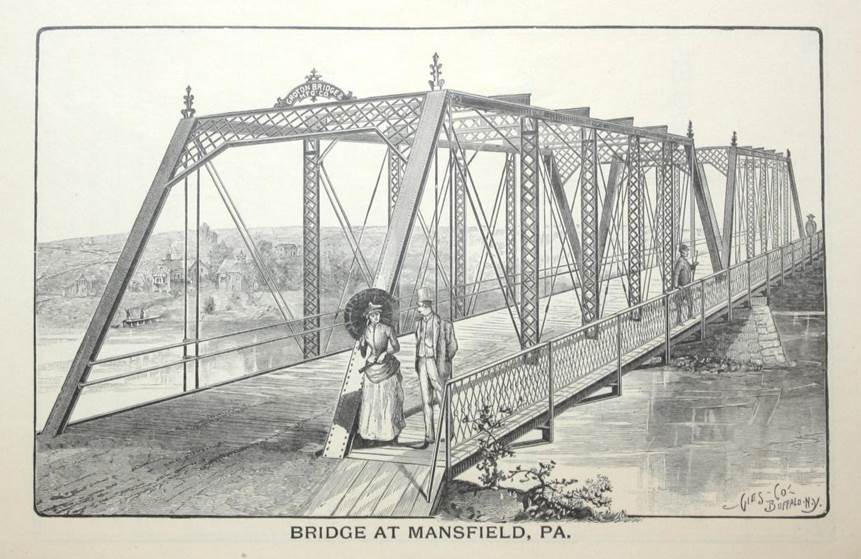
A bridge illustration from the 1875 Groton Bridge Companies Annual Catalogue of Machinery and Bridges. Courtesy of Internet Archive.
Today, the continuous struggle to provide safe and efficient transportation options threatens Pennsylvania’s once large and diverse population of metal truss bridges. About 50% of the state’s metal truss roadway bridges have been lost over the last 20 years. However, there are alternatives to demolishing bridges that cannot meet today’s traffic needs which allow for preservation of these visual icons that serve as direct links to our past
Saving metal truss bridges is directly related to an inherent design feature: their ability to be dissembled and moved. In the case of smaller spans, some bridges can even be relocated intact. The Pennsylvania Department of Transportation (PennDOT) bridge marketing program aims to preserve metal truss bridges that are unable to meet the needs of a crossing through relocation and adaptive reuse. Successful reuses have come in the form of pedestrian walkways along hiking trails, university campuses, and golf courses. SHPO staffer Barbara Frederick first introduced you to the idea in this 2013 post.
In an effort to save more metal truss bridges off of the transportation system, earlier this year PennDOT and the State Historic Preservation Office created a position within the SHPO’s office to assist with metal truss bridge marketing efforts. As the Transportation Special Initiatives Coordinator, I find it hard to work with these bridges and not be fascinated by them. My current favorite is the Nebraska Bridge, a Parker thru truss that carries Nebraska Road over Tionesta Creek in Forest County. Part of the charm of this bridge is that it withstands seasonal flooding when waters are released by a nearby dam. Given the unique settings, features, and stories of the state’s metal truss bridge population, ask me next week, and I am sure I will have discovered a new favorite!
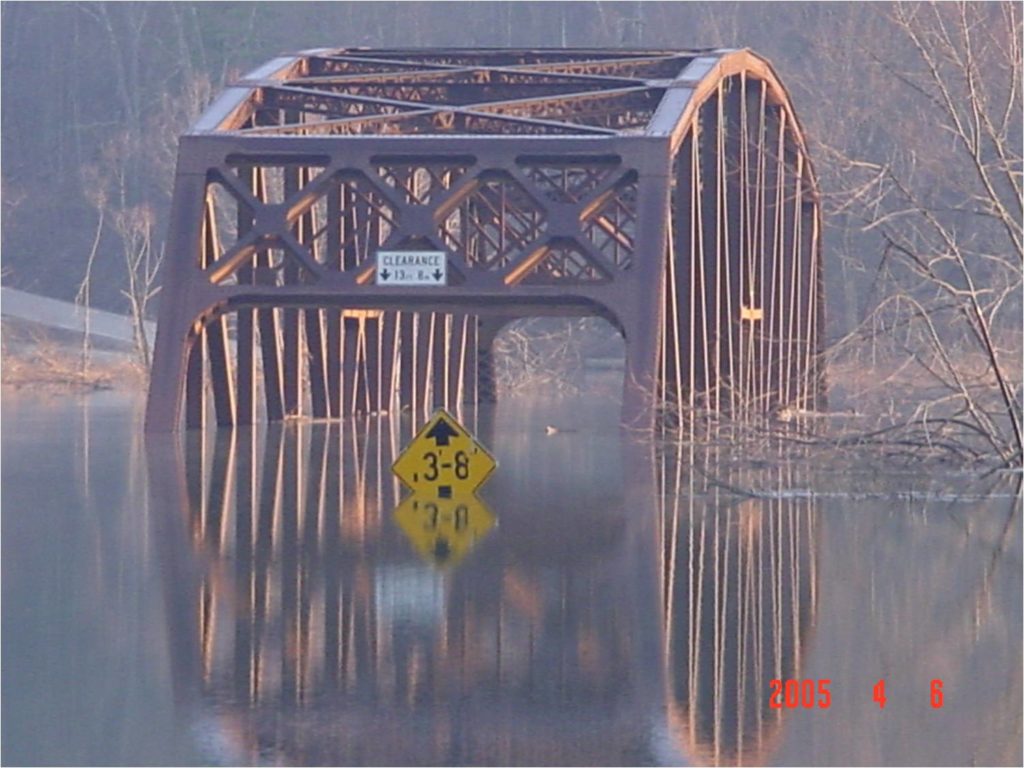
Nebraska Bridge underwater during seasonal flooding from a nearby dam. Used by permission of PennDOT.
Crossing a metal truss bridge is a tangible link to the past and an experience that is quickly vanishing.
These bridges are a distinct link to history and many are eligible or listed on the National Register of Historic Places. Experience has proven historic bridges have their best chances at a preservation outcome when someone cares about them. Could you be a champion for the preservation of historic metal truss bridges? Is there a metal truss bridge in your community that you care about? If not, I challenge you to take a road trip through Pennsylvania and find your favorite metal truss bridge. I’d love to hear from you if you are interested in the metal truss bridge marketing effort; you can always reach me at tyguyton@pa.gov. Perhaps you too will fall in love with these beauties!
Comment Policy
PHMC welcomes and encourages topic-related comments on this blog. PHMC reserves the right to remove comments that in PHMC’s discretion do not follow participation guidelines.
Commenters and Comments shall be related to the blog post topic and respectful of others who use this site.
Commenters and Comments shall not: use language that is offensive, inflammatory or provocative (this includes, but is not limited to, using profanity, obscene, or vulgar comments); disparage other commenters or people; condone illegal activity; identify the location of known or suspected archeological sites; post personal information in comments such as addresses, phone numbers, e-mail addresses or other contact details, which may relate to you or other individuals; impersonate or falsely claim to represent a person or an organization; make any commercial endorsement or promotion of any product, service or publication.
If you would like to comment on other topics not related to this blog post but related to PHMC, please fill out the PHMC Contact Us Form.
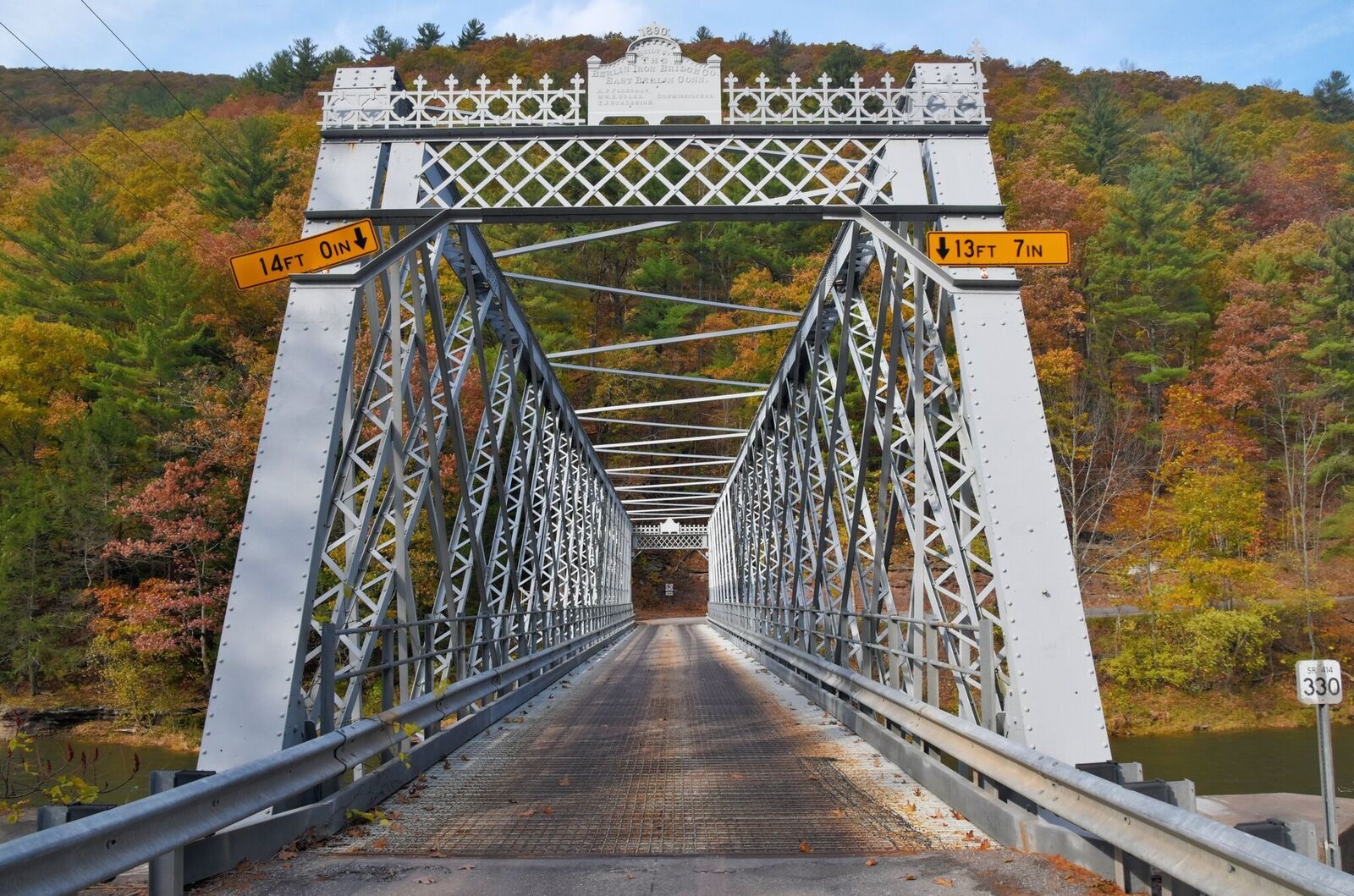
I love the old truss bridges like these. There is one just outside of Tyrone where Irish Flats Road intersects with Rt 453 that I’ve photographed before. And an abandoned one in Clearfield County on Mease/Kelleytown Road.